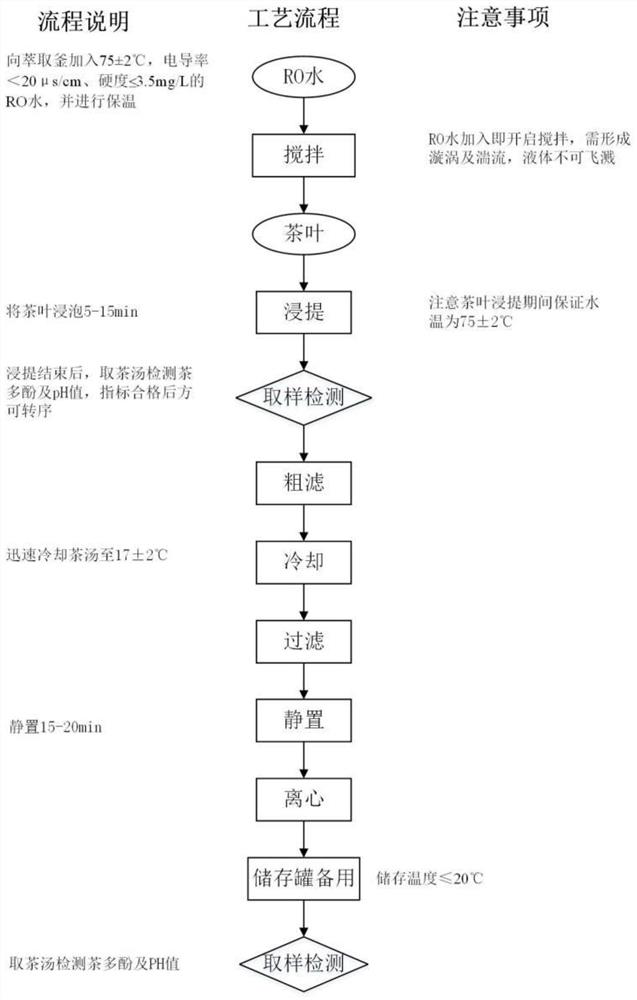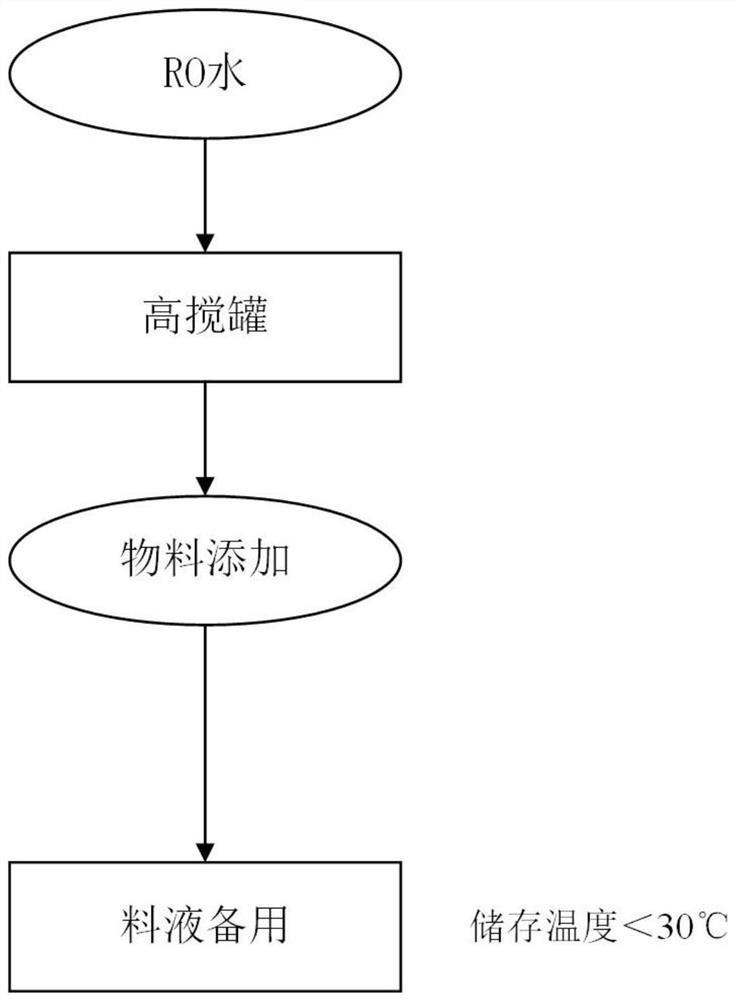Tea and coffee mixed beverage and preparation method thereof
A beverage and coffee technology, applied in the field of mixed beverage preparation, can solve the problems of insufficient tea functionality, single types and properties of tea, and not many new products, etc., achieve a good refreshing effect, maintain taste and taste, and reduce the risk of precipitation Effect
- Summary
- Abstract
- Description
- Claims
- Application Information
AI Technical Summary
Problems solved by technology
Method used
Image
Examples
Embodiment 1
[0051] In this embodiment, a comparative test is carried out for RO water with different hardness. RO water was formulated into beverages respectively, and then the beverage samples were placed in a thermostat at 50±0.5°C for one week to observe the stability. Specifically, the formulas of the drinks are shown in Table 1-1 and Table 1-2 respectively:
[0052] Table 1-1 Composition of tea soup solution
[0053] ingredients Amount added (%) RO water 100 tea 1.5
[0054] Table 1-2 Composition of beverage products
[0055] ingredients Amount added (%) RO water 31.5 Table 1-1 tea soup 60 Maltitol Liquid 6.5 coffee concentrate 0.8 compound sweetener 1.0 tea theanine 0.04 Dipotassium phosphate 0.03 Vitamin C 0.03 food flavor 0.1
[0056] Wherein, compound sweetener is the combination of erythritol and sucralose;
[0057] The amount of RO water added refers to the sum of the amount of...
Embodiment 2
[0071] In this example, a comparative test is carried out on RO water with different conductivity. In this test, RO water with three gradients of conductivity of 0-20μs / cm, 30-50μs / cm, and 50-100μs / cm are selected and prepared into beverages respectively. , and then place the beverage sample in a thermostat at 50±0.5°C for one week to observe the stability. Specifically, the formulas of the drinks are shown in Table 1-1 and Table 1-2 respectively, and the preparation process is the same as in Example 1.
[0072] test results:
[0073] After being placed for a week, it was found through observation that the floc precipitation produced by the three different gradient conductivity waters is different, and the performance of the RO water of 0-20μs / cm is significantly better than the other two.
Embodiment 3
[0075] The present embodiment carries out comparative test to the preparation technology of beverage, respectively compares from three aspects such as cooling speed, standing time, filtration mode, specifically as follows:
[0076] Preconditions: the specific formula and preparation process are the same as in Example 1, except for the variable factors for comparison, other conditions are all the same.
[0077] a. Control sample: In addition to the coarse filtration of the extract, the extract is rapidly cooled to ≤20°C within 10 minutes, and the filter or filter bag with a pore size of 1 μm is used for filtration after cooling, and the standing process adopts standing Except that the bucket was left to stand for 15-45min, the others were completely carried out according to the process of Example 1.
[0078] b. Experimental sample:
[0079] (1) The above three key process steps (i.e. cooling to 17±2° C., filtration, and standing for 30 minutes) were removed, and the rest were ...
PUM
 Login to View More
Login to View More Abstract
Description
Claims
Application Information
 Login to View More
Login to View More - R&D
- Intellectual Property
- Life Sciences
- Materials
- Tech Scout
- Unparalleled Data Quality
- Higher Quality Content
- 60% Fewer Hallucinations
Browse by: Latest US Patents, China's latest patents, Technical Efficacy Thesaurus, Application Domain, Technology Topic, Popular Technical Reports.
© 2025 PatSnap. All rights reserved.Legal|Privacy policy|Modern Slavery Act Transparency Statement|Sitemap|About US| Contact US: help@patsnap.com



